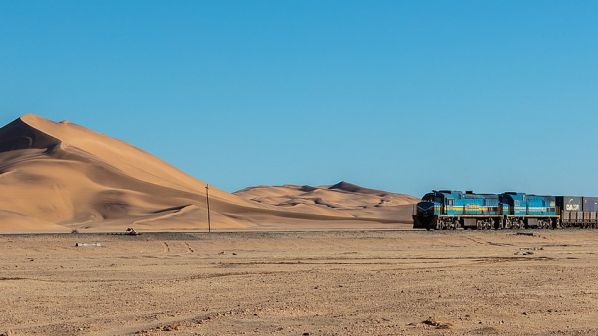The 107.5-km Walvis Bay-Arandis rail line in Namibia was recently rehabilitated by the China Gezhouba Group Corporation (CGGC). The company faced several hurdles brought on by the COVID-19 pandemic, desert weather, and a shortage of materials.
The railway restoration project is a vital component of Namibia’s government’s Vision 2030 plan to expand transportation capacity and spur economic development. It also looks to establish Namibia as a logistics and transportation hub for neighboring African states.
The African Development Bank offered a loan for 44% of the $N 1.029 billion ($US 67.5 million) A1S1 project. The Namibian government also funded the project to the tune of 56%.
53.2% of the 1067 mm-gauge, the 201-kilometer line from Walvis Bay and Arandis to Kranzberg, where it links to lines running both north as well as south to Otavi and the Namibian capital Windhoek, is made up of Walvis Bay-Arandis rail line. The line speed was initially restricted to 40 km/h, but after the upgrade, it has now increased to 80 km/h.
The passing loop is situated in Arandis. CGGC is modernizing the southern section of the loop from Arandis to Walvis Bay. A joint venture between Qingjian Group and Unik Construction Engineering is carrying out the upgrade of the northern section of the loop. The loop proceeds to Kranzberg, under a separate contract.
CGGC was awarded the 27-month contract at the end of 2019. The Chinese company started work to rehabilitate and upgrade its section of the line in November 2020.
Challenges faced by the Chinese company while carrying out the Walvis Bay-Arandis rail line project
The Covid-19 pandemic, regular strong winds as well as dust storms in the desert environment, and challenges obtaining the high-quality materials needed, according to CGGC representative Mr. Li Lije, have all been challenges his company has had to face from the project’s inception.
Nevertheless, the initiative has created more than 500 employment opportunities in the area. It has also helped Namibia train a lot of skilled workers.
